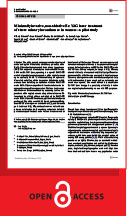Authors: Fistonic et. al.,
Published in: Lasers Med Sci, 2016(31):635–643
1. INTERDISCIPLINARY APPROACH – PHYSICS AND MEDICINE HAND IN HAND TO SHOW INCONTILASE® MODE OF ACTION
The paper, published in a high-impact medical laser journal, combines computer modelling of the Fotona SMOOTH® thermal pulsing effect, confirms the numerical calculations using in vivo thermal camera imaging, and presents data from a pilot study of 31 patients suffering from stress urinary incontinence, proving that the delivery of gentle thermal pulsing to the vaginal wall’s mucosa can improve the symptoms of stress urinary incontinence.
2. SMOOTH™ PULSES GENTLY HEAT THE VAGINAL MUCOSA TO THE IDEAL TEMPERATURE
Numerical modelling and in vivo thermal camera measurements showed that SMOOTH™ laser pulses warm up the vaginal wall mucosa to peak temperatures up to 65°C, which is ideal for collagen remodeling and strengthening of the tissue, without damaging the epithelium.
3. CLINICAL STUDY IN PATIENTS WITH STRESS URINARY INCONTINENCE
The pilot clinical study used the IncontiLase® protocol, which delivers SMOOTH™ pulses to the vaginal canal using a patented pulsing sequence, with an emphasis on the anterior vaginal wall. One treatment session was performed and the results were evaluated up to 6 months after treatment. ICIQ questionnaire, perineometry and post void residual volume were among the study assessments.
4. PILOT CLINICAL STUDY HAS SHOWN SIGNIFICANT AND CLINICALLY MEANINGFUL IMPROVEMENT IN INCONTINENCE SYMPTOMS AFTER INCONTILASE® TREATMENT
Significant improvement of urinary incontinence symptoms was seen at all follow-ups. Patients also had significantly improved voiding function.


